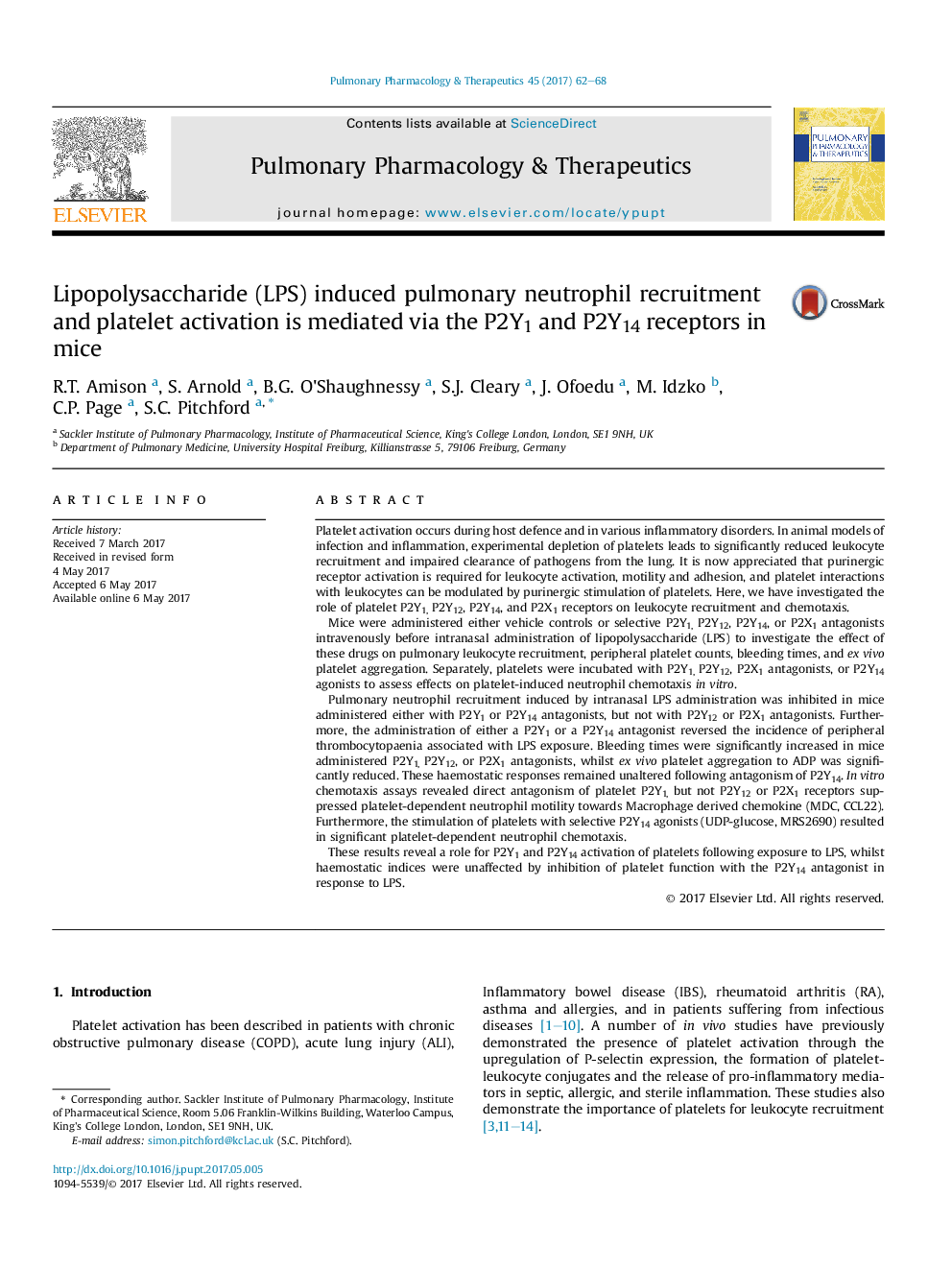| کد مقاله | کد نشریه | سال انتشار | مقاله انگلیسی | نسخه تمام متن |
|---|---|---|---|---|
| 5558144 | 1561078 | 2017 | 7 صفحه PDF | دانلود رایگان |

Platelet activation occurs during host defence and in various inflammatory disorders. In animal models of infection and inflammation, experimental depletion of platelets leads to significantly reduced leukocyte recruitment and impaired clearance of pathogens from the lung. It is now appreciated that purinergic receptor activation is required for leukocyte activation, motility and adhesion, and platelet interactions with leukocytes can be modulated by purinergic stimulation of platelets. Here, we have investigated the role of platelet P2Y1, P2Y12, P2Y14, and P2X1 receptors on leukocyte recruitment and chemotaxis.Mice were administered either vehicle controls or selective P2Y1, P2Y12, P2Y14, or P2X1 antagonists intravenously before intranasal administration of lipopolysaccharide (LPS) to investigate the effect of these drugs on pulmonary leukocyte recruitment, peripheral platelet counts, bleeding times, and ex vivo platelet aggregation. Separately, platelets were incubated with P2Y1, P2Y12, P2X1 antagonists, or P2Y14 agonists to assess effects on platelet-induced neutrophil chemotaxis in vitro.Pulmonary neutrophil recruitment induced by intranasal LPS administration was inhibited in mice administered either with P2Y1 or P2Y14 antagonists, but not with P2Y12 or P2X1 antagonists. Furthermore, the administration of either a P2Y1 or a P2Y14 antagonist reversed the incidence of peripheral thrombocytopaenia associated with LPS exposure. Bleeding times were significantly increased in mice administered P2Y1, P2Y12, or P2X1 antagonists, whilst ex vivo platelet aggregation to ADP was significantly reduced. These haemostatic responses remained unaltered following antagonism of P2Y14. In vitro chemotaxis assays revealed direct antagonism of platelet P2Y1, but not P2Y12 or P2X1 receptors suppressed platelet-dependent neutrophil motility towards Macrophage derived chemokine (MDC, CCL22). Furthermore, the stimulation of platelets with selective P2Y14 agonists (UDP-glucose, MRS2690) resulted in significant platelet-dependent neutrophil chemotaxis.These results reveal a role for P2Y1 and P2Y14 activation of platelets following exposure to LPS, whilst haemostatic indices were unaffected by inhibition of platelet function with the P2Y14 antagonist in response to LPS.
Journal: Pulmonary Pharmacology & Therapeutics - Volume 45, August 2017, Pages 62-68